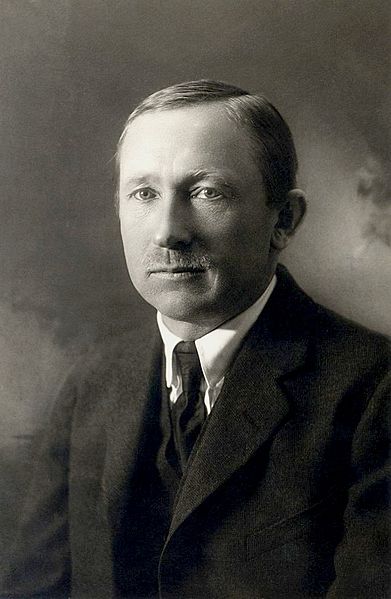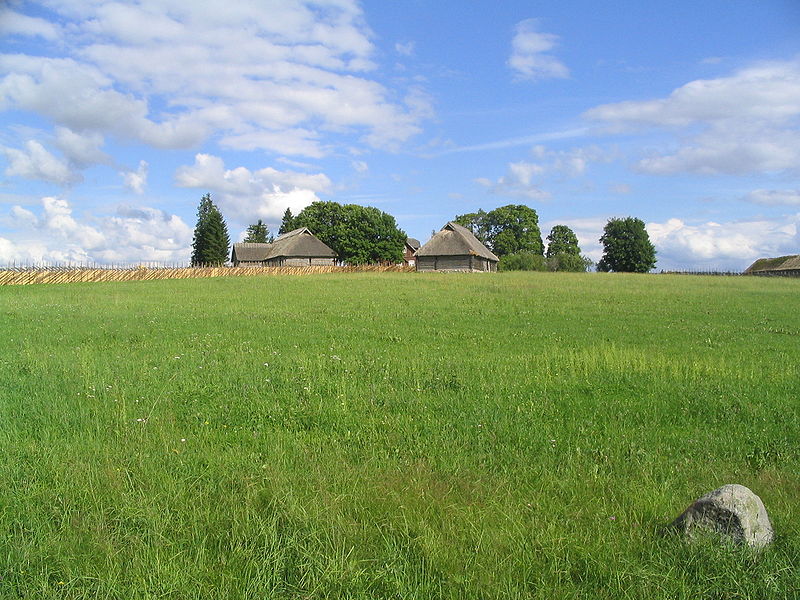<Back to Index>
- Naval Aviator Admiral John Henry Towers, 1885
- Writer Anton Hansen Tammsaare, 1878
- Tsar of Bulgaria Boris III the Unifier, 1894
PAGE SPONSOR


Anton Hansen Tammsaare (30 January 1878 - 1 March 1940), born Anton Hansen, was an Estonian writer whose pentalogy Truth and Justice (Tõde ja õigus; 1926 – 1933) is considered one of the major works of Estonian literature and "The Estonian Novel".
Tammsaare was born in Järvamaa, in the municipality of Albu, village of Vetepere, the son of a farmer. He came from a poor background, but managed to collect enough money for his education. More so his family was quite enlightened for the time, with his father for instance ordering newspapers, which most Estonian farmers didn't. He studied in Väike - Maarja and Tartu in Hugo Treffner's Gymnasium, and afterwards at the University of Tartu, where he studied law. Tammsaare's studies were interrupted by tuberculosis in 1911. He spent over a year in a sanatorium in Sochi - where his memorial house is open to the public - and the following six years in his brother's farm in Koitjärve, Estonia (now part of Põhja - Kõrvemaa Nature Reserve), reading works of Cervantes, Shakespeare and Homer.
In 1918, when Estonia became independent, Tammsaare moved to Tallinn.
It was here that Tammsaare wrote the works which have gained him a
permanent place in Estonian literature. Although Tammsaare took his
subjects from the history and life of the Estonian people, his novels have deep connections with the ideas of Bergson, Jung and Freud, and such writers as Knut Hamsun and André Gide. Tammsaare's early works are characterized by rural "poetic" realism.
Some of his stories also reflect the atmosphere of the revolutionary
year of 1905. During what is sometimes classified as his second period,
from 1908 to 1919, he wrote several short urban novels and collections
of miniatures. In "Poiss ja liblik" (1915, The Boy and the Butterfly),
Tammsaare shows the influence of Oscar Wilde. Internationally best known is his last novel, Devil with a False Passport. Truth and Justice comprises
five volumes, which have no individual titles (some were added in
translation). Since vol. 3 contains a description about the Russian Revolution of 1905, which is not informed by ideology but by a Camusian attention to individual suffering, it was often combined with vol. 2 by Soviet censorship. Even
today, the third volume is sometimes called "artistically inferior",
although the description of the revolution is on par with similar
scenes in Pasternak's Doctor Zhivago. In Estonia, the second volume, with its Tartu educational
scenes, is today probably the most enjoyed. International critics would
probably opt for vol. 1 as the strongest overall; it is a classical
peasant novel reminiscent of Hamsun which
is also generally held to be the most telling one about "the Estonian
character", embodied especially in two antagonistic farmer figures
Andres and Pearu. Tammsaare himself said later that the different
volumes deal with the relation of Man (i.e., the human) to (1)
the land, (2) God, (3) State and society, (4) him- or herself and (5) resignation. Truth and Justice has
never been translated into English, but there are two complete
translations into German and one into French. Volume 1 has also been
translated into Finnish, Polish and Hungarian (with the title,
Orcád verítékével).